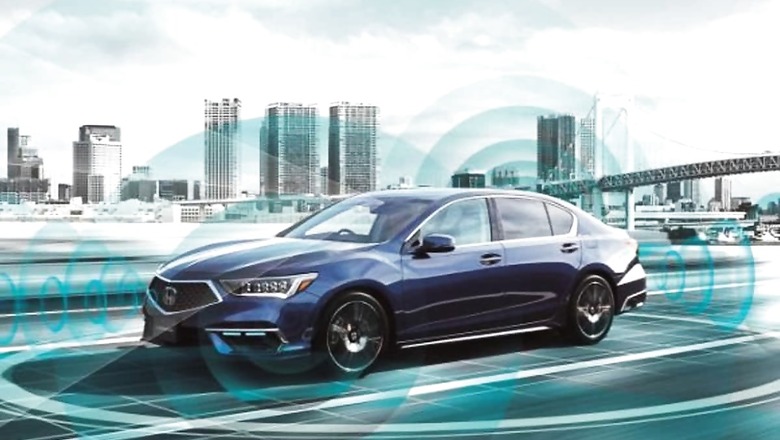
views
When we think of self-driving cars, there’re two things that commonly pop-up in anyone’s imagination — either a super fancy futuristic car such as those featured in science-fiction stories like the Westworld, or more realistic and current like Tesla. However, the automated auto industry is growing rapidly, with multiple companies trying their hands at either driverless or auto-assist cars. One such car to have recently debuted is Honda Legend Hybrid EX. The car is a part of Honda's Sensing Elite system and a Level 3 autonomous driving technology.
With this launch, Honda has become the first manufacturer in the world to debut a series production Level 3 self-driving vehicle.
Before you get excited to grab one of these fancy machines, it is only available in Japan for now. According to The Drive, the level 3 car has Advanced Driver Assistance System (ADAS) which makes hands-free driving possible, though only in certain conditions. It is capable of passing over slow-moving vehicles even without being prompted by the driver or alternately removing itself from a fast-moving traffic lane once the takeover is done.These features were recently showcased in a video shared on YouTube. The feature is described in the video as an “active lane change hand-off function." You turn the switch on for this function and sit back with your hand folded in your lap (or eat a snack or drink your coffee).
When the distance becomes shorter and the car realises it needs to change lanes to overtake the slower car, it will automatically turn on the signal light to alert any vehicles in the back.
While Honda is super sure of this feature and suggests you can use the hand-free time to watch a show on the car’s incredible infotainment system and leave the decision-making to the car, it is important to note that real-world application with full-traffic, pedestrians, and so on are not fully known yet.
But as showcased in the rather empty highway with smooth road and only a car or two, the functions seem to run pretty efficiently.“The vehicle's vision system and radar-based sensors go into action to assess the surrounding lanes and determine if passing the offending vehicle can be done safely. If so, it moves into an adjoining lane and passes the vehicle," reports the Drive.
Read all the Latest News, Breaking News and Coronavirus News here




















Comments
0 comment